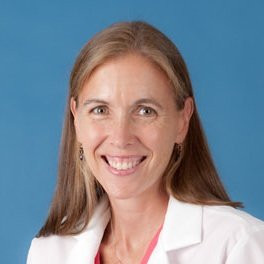Scary news about childhood obesity

Follow me on Twitter @drClaire
The latest data on childhood obesity was just released, and the news isn’t good.
A full 41.5% of 16-to-19-year-olds were overweight in 2015–2016, a jump from 36.7% just two years before. The numbers were even worse for girls in that age group: 47.9% of them were overweight, up from 35.6% in 2013–2014.
That’s not a good trend.
There was another worrisome trend among 2-to-5-year-olds, among whom 26% were overweight. If you look at the percentage that was not just overweight but obese, between 2013–2014 and 2015–2016, the percentage went from 9.3% to 13.7%.
The trend among the preschoolers is particularly worrisome, given that recent studies have found that if a child is overweight in preschool, chances are they are going to stay that way into adulthood. That’s the thing. There’s no such thing as “baby fat” anymore. Fat doesn’t go away as kids get older; it stays.
This has terrible implications for the future health of our children. Being obese as an adult is associated with poor health — and early death.
Rates of obesity were much higher among black and Hispanic children than they were in white and Asian children, which highlights part of what makes this so complicated and hard. Cultural and socioeconomic factors play a big role in obesity. While ultimately it comes down to diet and exercise, so very many factors influence what we eat and how active we are. Where we live (which impacts food availability and pricing, as well as available safe spaces for exercise), our income, advertising, availability of exercise opportunities, school programming and meals, daily routines — all of it comes to play in our weight and the weight of our children. There are many initiatives underway to help combat childhood obesity, but the problem is so big and complex that it’s hard for any individual initiative to do very much.
That doesn’t mean that we can’t do anything, because we can. The one thing we all can do, and need to do, is take the problem seriously. There is no one solution that will help every child — but there is always something that can be done for each child, if parents and caregivers work hard at it and don’t give up.
Here is what all parents should do:
- Know if your child is at a healthy weight. We use body mass index to help us figure this out. It’s a calculation that uses height and weight to come up with a number. For adults, a BMI between 19 and 25 is considered healthy. For children, instead of a number we use percentiles. Once a child’s BMI gets to the 85th percentile or higher, we consider the child to be overweight. The Centers for Disease Control and Prevention has BMI calculators you can use.
- If your child is overweight, don’t ignore it. Talk with your doctor. Make real changes, and stick with them. You should never make a child feel bad for being overweight, and you should never put a child on a strict diet unless your doctor tells you to. Small, simple changes like cutting out juice or soda, eating more fruits and vegetables and less processed foods, or limiting junk food, fast food, and sweets can make a big difference. And just as important…
- Make sure your child is active. This applies to all children, regardless of their BMI. Habits learned in childhood last a lifetime, and exercise makes us healthier forever. Everyone can be active; there is always a way, even if it’s dancing in the kitchen or taking walks around the block. The recommendation is that children be active for an hour a day. The average child spends far more than that in front of a screen; if you swap out one screen hour for an exercise hour, you can literally change their life.
- Shop for and serve healthy foods. This, too, applies to all children and families regardless of BMI. It’s an investment in everyone’s health.
If you aren’t sure how to do any of these, or if your efforts aren’t successful, talk to your doctor. Sometimes it just takes some brainstorming together to find the best path forward. Because that’s what this is about: the path forward for our children. We owe them the best path possible.
About the Author

Claire McCarthy, MD, Senior Faculty Editor, Harvard Health Publishing
Disclaimer:
As a service to our readers, Harvard Health Publishing provides access to our library of archived content. Please note the date of last review or update on all articles.
No content on this site, regardless of date, should ever be used as a substitute for direct medical advice from your doctor or other qualified clinician.












